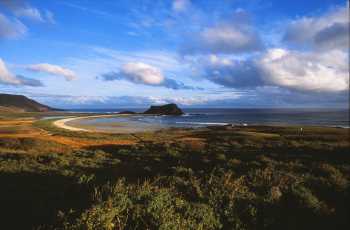
Clarion Island is one of four Mexican islands which form the Revillagigedo Archipelago, in the Pacific Ocean over 700 km from the mainland. The Reserva de la Biosfera Archipiélago de Revillagigedo was designated as a Ramsar Wetland Site of International Importance in 2004 and is on Mexico's World Heritage Tentative List, as well as being an Endemic Bird Area. The archipelago supports 12 breeding seabird species, including the Near Threatened Laysan Albatross Phoebastria immutabilis and the Critically Endangered Townsend’s Shearwater Puffinus auricularis.
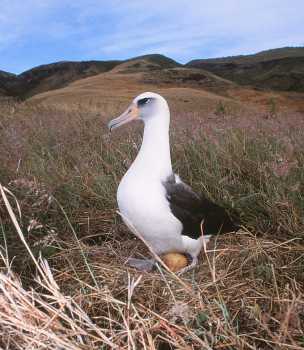
A Mexican naval garrison is permanently stationed on 28.4-km2 Clarion Island and is the only human habitation. Domestic pigs and sheep and European Rabbits Oryctolagus cuniculus were introduced between 1979 and 1986 and have wreaked havoc on the island’s bird populations as well as causing massive erosion and denuding much of the island of plants. Pigs and sheep have been since eradicated, but the rabbits remain a problem.
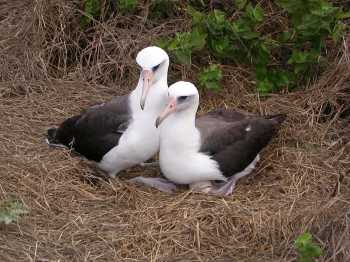
A breeding pair of Laysan Albatrosses on Clarion, where they make irregular nests of grass which is abundant on the island. They were first recorded breeding on Clarion in 1988, but the population has remained small (<50 pairs). Townsend’s Shearwater, which historically bred in dense colonies, was extirpated on Clarion by humans and pigs (click here).
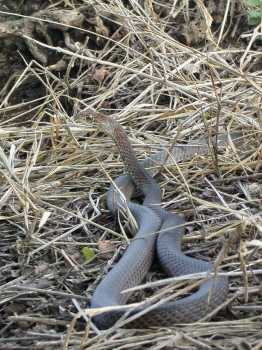
The Clarion Racer Masticophis anthonyi is endemic to the island, and is the only snake recorded from the Revillagigedo Archipelago. They are found all over Clarion, but not much is known about their numbers or ecology.
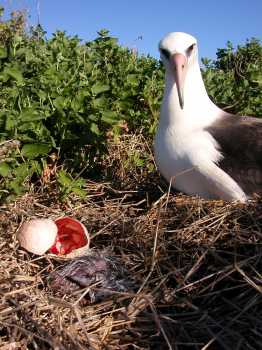
Photographs by Ross Wanless & Andrea Angel
A recently hatched albatross chick that was being depredated by a Clarion Racer during the 2002/3 breeding season. All of the 46 albatross nests in that season failed during incubation and within three days of hatching, despite the successful eradication of pigs (click here). In addition to the snake, Clarion Ravens Corvus corax clarionensis (a known egg predator) mobbed incubating Laysan Albatrosses and took eggs.
Selected References:
Aguirre-Muñoz, A., Croll, D.A., Donlan, C.J., Henry 3rd, R.W., Hermosillo, M.A., Howald, G.R., Keitt, B.S., Luna-Mendoza, L., Rodríguez-Malagón, M., Salas-Flores, L.M., Samaniego-Herrera, A., Sanchez-Pacheco, J.A., Sheppard, J., Tershy B.R., Toro-Benito, J., Wolf, S. & Wood, B. 2008. High-impact conservation: invasive mammal eradications from the islands of western México. Ambio 37: 101-107.
Comisión Nacional de Áreas Naturales Protegidas 2004. Programa de Conservación y Manejo Reserva de La Biosfera Archipiélago de Revillagigedo. Tlalpan: Comisión Nacional de Áreas Naturales Protegidas. 220 pp.
Wanless, R.M. & Angel, A. 2007. Masticophis anthonyi (Clarion Racer). Diet. Herpetological Review 38: 468.
Wanless, R.M., Aguirre-Muñoz, A., Angel, A., Jacobsen, J.J., Keitt, B.S. & McCann, J. 2009. Birds of Clarion Island, Revillagigedo Archipelago, Mexico. The Wilson Journal of Ornithology 121: 745-751.
Andrea Angel, 4 March 2013

 English
English  Français
Français  Español
Español